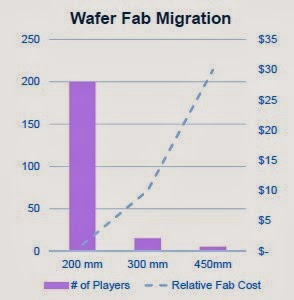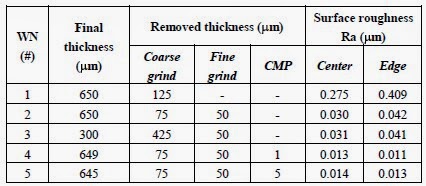Lets take a look at some of the key presentations from the
SEMI Summit that took place in January in Grenoble.
Gartner – 3D Market
Forecast
Stromberg of Gartner gave a market forecast of greater than 1.5M
300mm wafer equiv per month or 2B units / year of 2.5/3D (non MEMS non CIS) by
2018 but then listed several pages worth of technical issues that could affect
the forecast.
Editorial Comment:
In emerging technologies like 2.5/3D guaging market timing and size is an art, not
a science but I’m not sure what numbers like this are worth if you preface them
by saying they could be impacted by thermal issues, yield issues, design
issues and competitive treats by PoP and WB devices. Of course all those things are
true, but then what kind of confidence do we have in the numbers / timing
? This is true for all the marketing
houses not just Gartner.
GlobalFoundries
GF has been detailing their imminent commercialization of 2.5/3D IC for several years. Their current status report is shown below.
Their response to Interposer TSV formation, front side
routing and backside reveal and RDL
issues are shown below. High IO counts require dense interposer
frontside routing (i.e. over 1600 wires for a HBM port.
The GF supply chain for 2.5D productization is shown below:
TSMC
Miekei Leong , VP TSMC, gave the standard TSMC CoWoS pitch
but did offer a definition of their supply chain model where OSATS are now
integrated as part of the supply chain.
Another interesting roadmap showed TSMC demonstrating HBM
(high bandwidth memory) on CoWoS by 4Q 2014.
IMEC – Cost Analysis
Eric Beyne of IMEC presented data on a cost breakdown of
their 5 x 50µm TSV full flow 3DIC process (without stacking) showing the TSV
middle fabrication process and the thin and backside reveal processing are
about equivalent in cost.
They find that a lot of cost
is invested in CMP processing which can be improved by reducing the Cu
overburden after TSV fill.
This can be compared to the
10 x 100µm TSV costs presented by Ramaswami of Applied Materials shown below:
For all the latest on 3DIC
and advanced packaging stay linked to IFTLE……………..





































